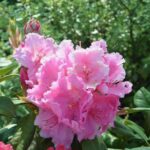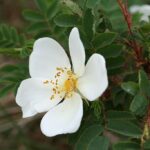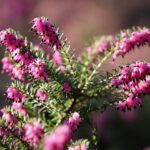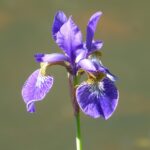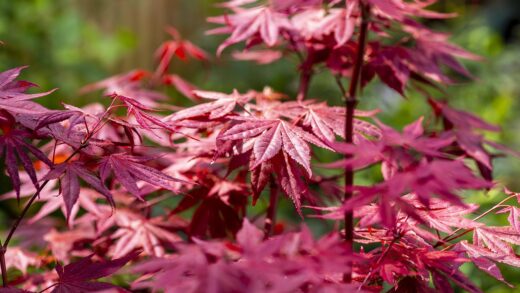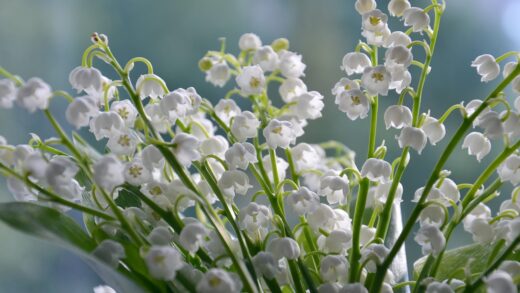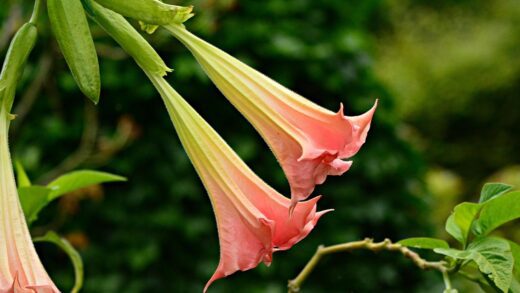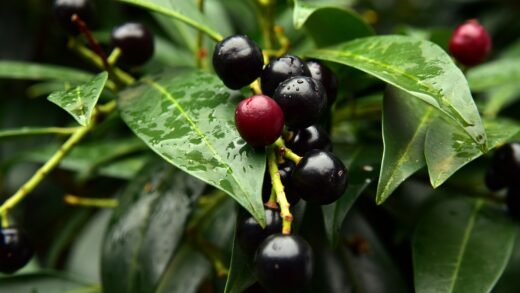Spiraea shrubs represent a cornerstone of landscape design, celebrated for their resilience, versatility, and profusion of delicate flowers. Achieving a truly spectacular display from these plants, however, extends beyond simple planting and requires a dedicated and knowledgeable approach to their ongoing care. This involves a holistic understanding of the plant’s life cycle, from its soil and nutritional needs to its pruning requirements and seasonal vulnerabilities. Proper care ensures not only vigorous growth and abundant flowering but also enhances the plant’s natural form and long-term health, making it a rewarding endeavor for any dedicated gardener. By mastering the fundamentals of spiraea maintenance, one can transform a common garden shrub into an exceptional specimen that provides beauty for many years.
Spiraea is a genus encompassing a wide variety of species and cultivars, each with slightly different characteristics, yet they share a common set of foundational care principles. Generally considered low-maintenance, their performance can be significantly elevated with thoughtful intervention throughout the year. The primary pillars of their care revolve around appropriate site selection, consistent moisture, seasonal feeding, and, most critically, correct pruning techniques tailored to the specific type of spiraea being grown. Neglecting any one of these areas can lead to diminished flowering, poor structure, and increased susceptibility to stress and disease. A proactive and observant approach is the key to unlocking their full potential.
The annual cycle of care begins in the dormant season with structural planning and pruning and extends through the active growing period with attention to water and nutrients. It is a continuous process rather than a series of isolated tasks. For instance, the health of the shrub in summer is directly influenced by the care it received in the spring. Understanding this interconnectedness allows for more effective and efficient garden management, preventing problems before they arise and ensuring the plant has the resources it needs at every stage of its development. This foresight is what separates basic gardening from true horticultural craftsmanship.
Ultimately, caring for spiraea is about creating a partnership with the plant. It requires observing its responses to environmental conditions and adjusting care practices accordingly. A yellowing leaf, a weak bloom, or leggy growth are all signals that the plant is communicating a need, whether it be for more sunlight, better drainage, or a nutrient boost. Learning to interpret these signs and respond appropriately is a skill that develops with experience and is central to the art of gardening. A well-cared-for spiraea is not just a plant in the landscape; it is a testament to the gardener’s skill and dedication.
Foundational soil requirements
The long-term health and vitality of any spiraea shrub begin with the soil in which it is planted. These plants are famously adaptable, but they perform best in soil that is well-drained, fertile, and rich in organic matter. Poorly drained or heavy clay soils can lead to root rot, a common issue that suffocates the root system and prevents the uptake of water and essential nutrients. Conversely, overly sandy soils may drain too quickly, requiring more frequent watering to keep the plant properly hydrated. The ideal soil structure allows for both moisture retention and adequate aeration, creating a healthy environment for root development.
More articles on this topic
Before planting, it is highly advisable to amend the native soil to create the optimal growing conditions. This can be achieved by incorporating generous amounts of compost, well-rotted manure, or other forms of organic matter into the planting area. These amendments improve soil structure, enhance its water-holding capacity, and provide a slow-release source of nutrients. For heavy clay soils, adding materials like pine bark fines or expanded shale can help break up the compacted particles and improve drainage. This initial soil preparation is arguably one of the most critical steps in ensuring the future success of the shrub.
Spiraea shrubs generally prefer a slightly acidic to neutral soil pH, typically in the range of 6.0 to 7.0. While they can tolerate slightly alkaline conditions, nutrient uptake, particularly of micronutrients like iron, can be compromised in high-pH soils, potentially leading to chlorosis, which manifests as yellowing leaves with green veins. A simple soil test can provide valuable information about the existing pH and nutrient levels. Based on the results, amendments such as garden lime can be used to raise the pH, while elemental sulfur or peat moss can be incorporated to lower it, ensuring the plant can access the full spectrum of nutrients it needs.
Maintaining soil health is an ongoing process, not just a one-time task at planting. Applying a layer of organic mulch, such as wood chips or shredded bark, around the base of the spiraea annually serves multiple purposes. Mulch helps to conserve soil moisture, suppress weed growth, and regulate soil temperature, protecting the roots from extreme heat in summer and cold in winter. As the mulch decomposes over time, it continues to enrich the soil with organic matter, fostering a thriving ecosystem of beneficial microorganisms that support robust plant growth.
Water and moisture management
Proper watering is crucial for establishing new spiraea plants and maintaining the health of mature specimens. During the first growing season after planting, a consistent watering schedule is essential to encourage the development of a deep and extensive root system. The soil should be kept consistently moist but not waterlogged. A general guideline is to provide approximately one inch of water per week, either from rainfall or supplemental irrigation, applied directly to the root zone. It is best to water deeply and infrequently rather than shallowly and often, as this encourages roots to grow deeper into the soil where moisture levels are more stable.
More articles on this topic
For established spiraea shrubs, the watering needs become less demanding, as their developed root systems make them quite drought-tolerant. However, during extended periods of heat and drought, even mature plants will benefit from occasional deep watering. Signs of water stress include wilting or drooping leaves, scorching on the leaf margins, and a general lack of vigor. Paying close attention to the plant’s appearance and the condition of the soil is the best way to determine when it is time to water. Allow the top few inches of soil to dry out between waterings to prevent oversaturation and the risk of root diseases.
The method of water application can also impact the plant’s health. Using a soaker hose or drip irrigation system is highly effective as it delivers water slowly and directly to the base of the plant, minimizing evaporation and ensuring it reaches the root zone where it is needed most. Overhead watering with a sprinkler can be less efficient and may increase the risk of fungal diseases like powdery mildew, as it leaves moisture lingering on the foliage. If overhead watering is the only option, it is best to do so in the morning to allow the leaves to dry completely before nightfall.
Factors such as soil type, climate, and the specific spiraea variety will all influence its water requirements. A spiraea planted in sandy soil or in a hot, windy location will require more frequent watering than one in loamy soil or a more sheltered spot. Similarly, larger cultivars with more foliage will transpire more and thus have higher water demands. Regular observation is key; by checking the soil moisture with your finger or a trowel, you can develop an intuitive sense of your plant’s needs and adjust your watering practices to match the prevailing conditions, ensuring it remains healthy and hydrated.
Pruning for plant health and bloom production
Pruning is one of the most important aspects of spiraea care, directly influencing the plant’s shape, size, and flowering capacity. The timing and technique of pruning depend entirely on the type of spiraea. Spring-blooming varieties, such as ‘Vanhouttei’, produce flowers on old wood, which is growth from the previous year. These shrubs should be pruned immediately after they finish flowering in the spring. Pruning them in late summer, fall, or winter would remove the very wood that is set to produce the next season’s blooms, resulting in a significant loss of flowers.
Summer-blooming spiraea varieties, including popular types like ‘Goldmound’ or the ‘Anthony Waterer’, bloom on new wood, which is the growth produced in the current season. This group offers more flexibility in pruning timing. They can be pruned in late winter or early spring, just as new growth begins to emerge. This practice encourages the plant to produce a fresh flush of growth, which will then terminate in abundant flower clusters during the summer. This annual pruning also helps to maintain a compact and tidy shape and removes any winter-damaged or dead wood.
The techniques for pruning can range from simple deadheading to more substantial renewal pruning. Deadheading, or the removal of spent flower clusters, is particularly beneficial for summer-blooming types. This not only improves the plant’s appearance but can also encourage a second, albeit often smaller, flush of blooms later in the season. For older, overgrown shrubs of both types, renewal pruning can be a highly effective method of rejuvenation. This involves selectively removing about one-third of the oldest, thickest canes right down to the ground over a period of three years, stimulating new growth from the base and revitalizing the entire plant.
Regardless of the type, all spiraea benefit from the removal of any dead, damaged, or crossing branches at any time of the year. This practice, known as thinning, improves air circulation through the center of the shrub, which can help to reduce the incidence of fungal diseases. It also directs the plant’s energy towards healthy, productive growth. Using clean, sharp pruning tools is essential to make precise cuts that heal quickly, further protecting the plant from potential disease entry points. Proper pruning is a skillful blend of art and science that keeps spiraea shrubs healthy and floriferous.
Fertilization and nutrient needs
While spiraea are not heavy feeders, providing them with supplemental nutrients can promote more vigorous growth and a more impressive floral display. The best time to fertilize is in the early spring, just as new growth begins to appear. A single annual application is typically sufficient for the entire growing season. Applying fertilizer too late in the summer can stimulate a flush of new growth that may not have time to harden off properly before the first frost, making it susceptible to winter damage. Therefore, timing is a critical component of a successful fertilization strategy.
A balanced, slow-release granular fertilizer is an excellent choice for spiraea. Look for a product with a balanced N-P-K ratio, such as 10-10-10, or one formulated specifically for flowering shrubs. This type of fertilizer provides a steady supply of nutrients over several months, mirroring the plant’s natural uptake patterns. Apply the granules evenly on the soil surface around the base of the shrub, extending out to the dripline (the edge of the branch canopy), and then gently scratch it into the top inch of soil. Watering thoroughly after application helps to activate the fertilizer and move the nutrients down into the root zone.
Incorporating organic matter into the soil is another highly effective way to meet the nutrient needs of spiraea. Amending the soil with compost or well-rotted manure at planting time provides a nutrient-rich foundation. This can be supplemented by applying a fresh layer of compost around the base of the plant each spring. This organic approach not only supplies a wide range of essential macro- and micronutrients but also improves soil structure and promotes a healthy microbial population, which aids in nutrient cycling and overall plant health. For many gardeners, this is the preferred method over synthetic fertilizers.
It is important to avoid over-fertilizing spiraea, as this can cause more harm than good. Excessive nitrogen, in particular, can lead to lush, rapid foliage growth at the expense of flower production. It can also result in weak, spindly stems that are more prone to damage from wind and pests. The goal is to supplement the soil’s natural fertility, not to force unnatural growth. Observing the plant’s performance is the best indicator of its needs; a healthy, flowering spiraea with good leaf color likely requires little to no supplemental fertilizer, especially if it is growing in well-amended soil.
Pest and disease management
Spiraea shrubs are known for their robust health and are generally resistant to many common pests and diseases. However, like any plant, they can occasionally fall prey to certain issues, especially when stressed by poor growing conditions such as drought, overcrowding, or nutrient deficiencies. The most common disease to affect spiraea is powdery mildew, a fungal infection that appears as a white, dusty coating on the leaves and stems. It is most prevalent in warm, humid weather and in areas with poor air circulation. While it is rarely fatal, it is unsightly and can weaken the plant over time.
Effective management of powdery mildew begins with prevention. Ensure there is adequate spacing between plants to promote good airflow, which helps to keep the foliage dry. When watering, apply water directly to the soil rather than overhead to avoid wetting the leaves unnecessarily. If an infection does occur, prune out the most heavily affected branches to improve circulation and remove fungal spores. For persistent cases, horticultural oils or a potassium bicarbonate-based fungicide can be effective, but always follow the product label instructions carefully. A healthy, well-cared-for plant is always the best defense.
Among pests, aphids are the most likely to trouble spiraea. These small, soft-bodied insects typically congregate on new growth and the undersides of leaves, feeding on plant sap. A minor infestation is usually not a cause for major concern and can often be controlled by a strong spray of water from a hose, which physically dislodges the pests. Encouraging natural predators, such as ladybugs and lacewings, into the garden can also provide excellent biological control. For more severe infestations, insecticidal soap can be a safe and effective treatment option, as it targets the pests without harming beneficial insects.
Other potential issues, though less common, include leaf spot, fire blight, and root rot. Leaf spot diseases cause dark blotches on the foliage and are often managed by improving sanitation, such as cleaning up and disposing of fallen leaves in the autumn. Fire blight is a more serious bacterial disease that causes branches to appear scorched and can be managed by pruning out infected wood well below the visible symptoms. Root rot is almost always a result of poorly drained, waterlogged soils, underscoring the importance of proper site selection and soil preparation from the very beginning. Proactive care and vigilant monitoring are the keys to keeping spiraea healthy and resilient.







